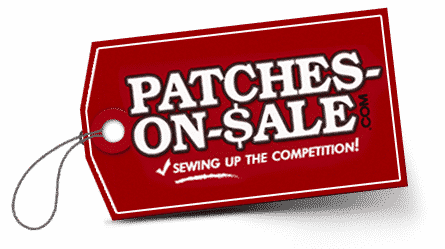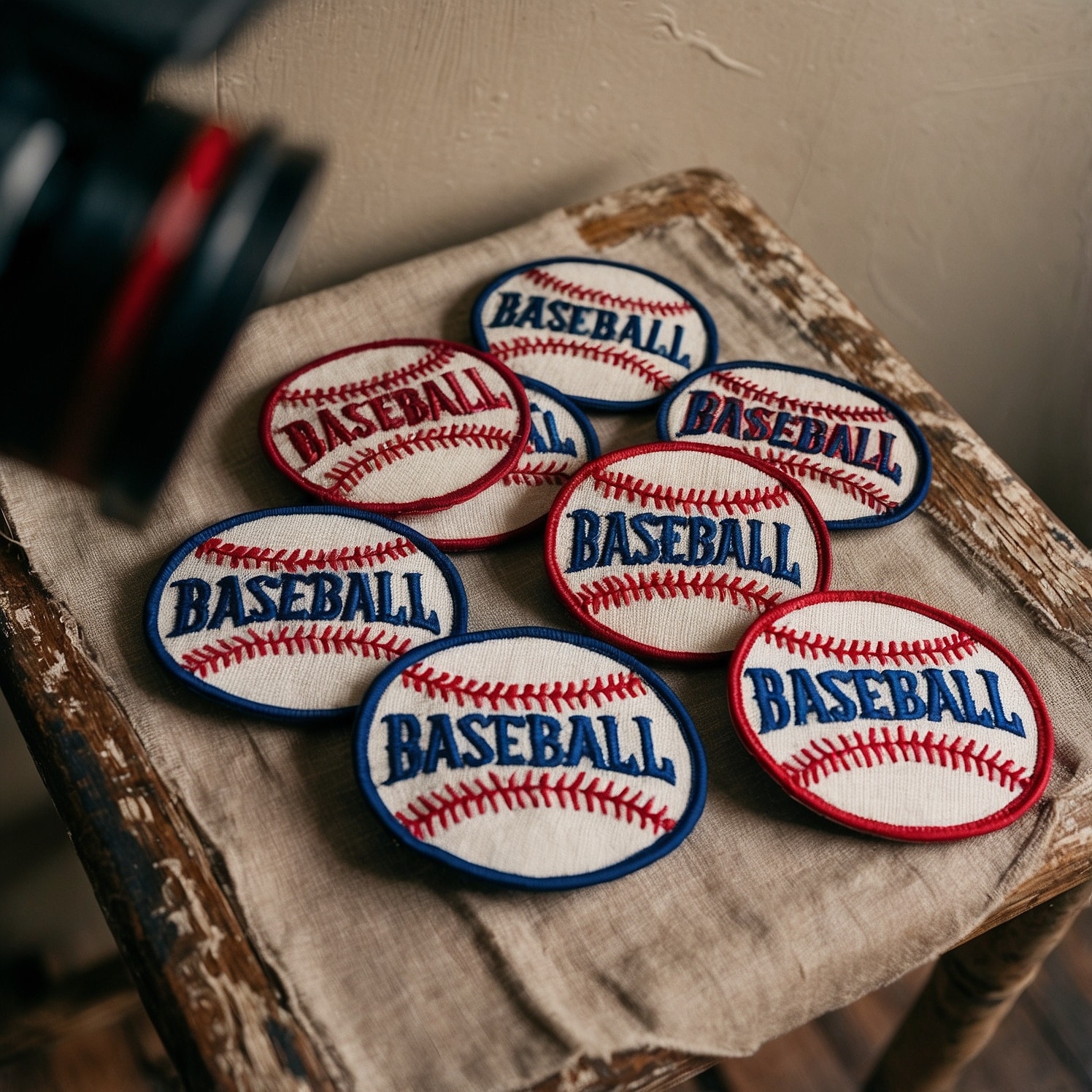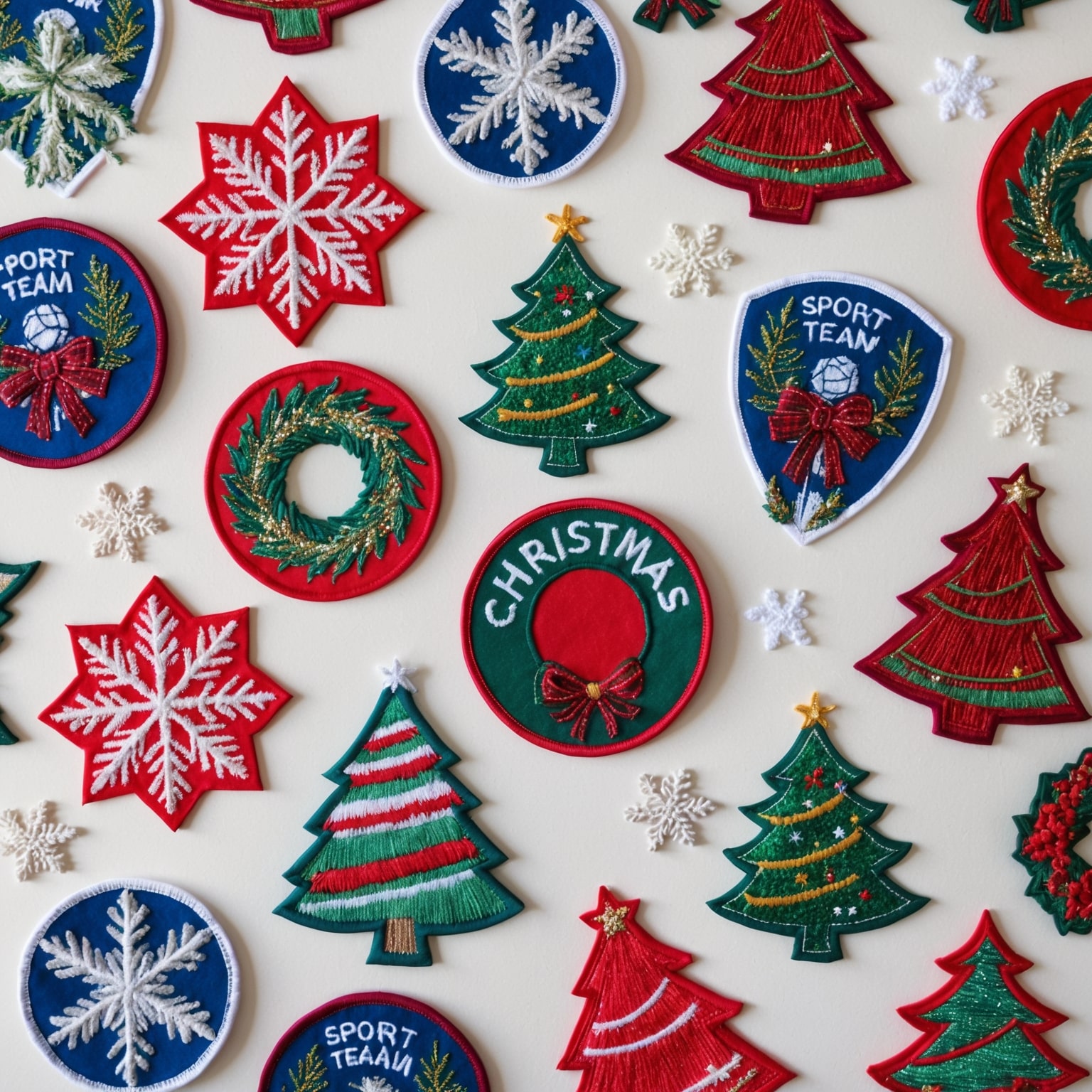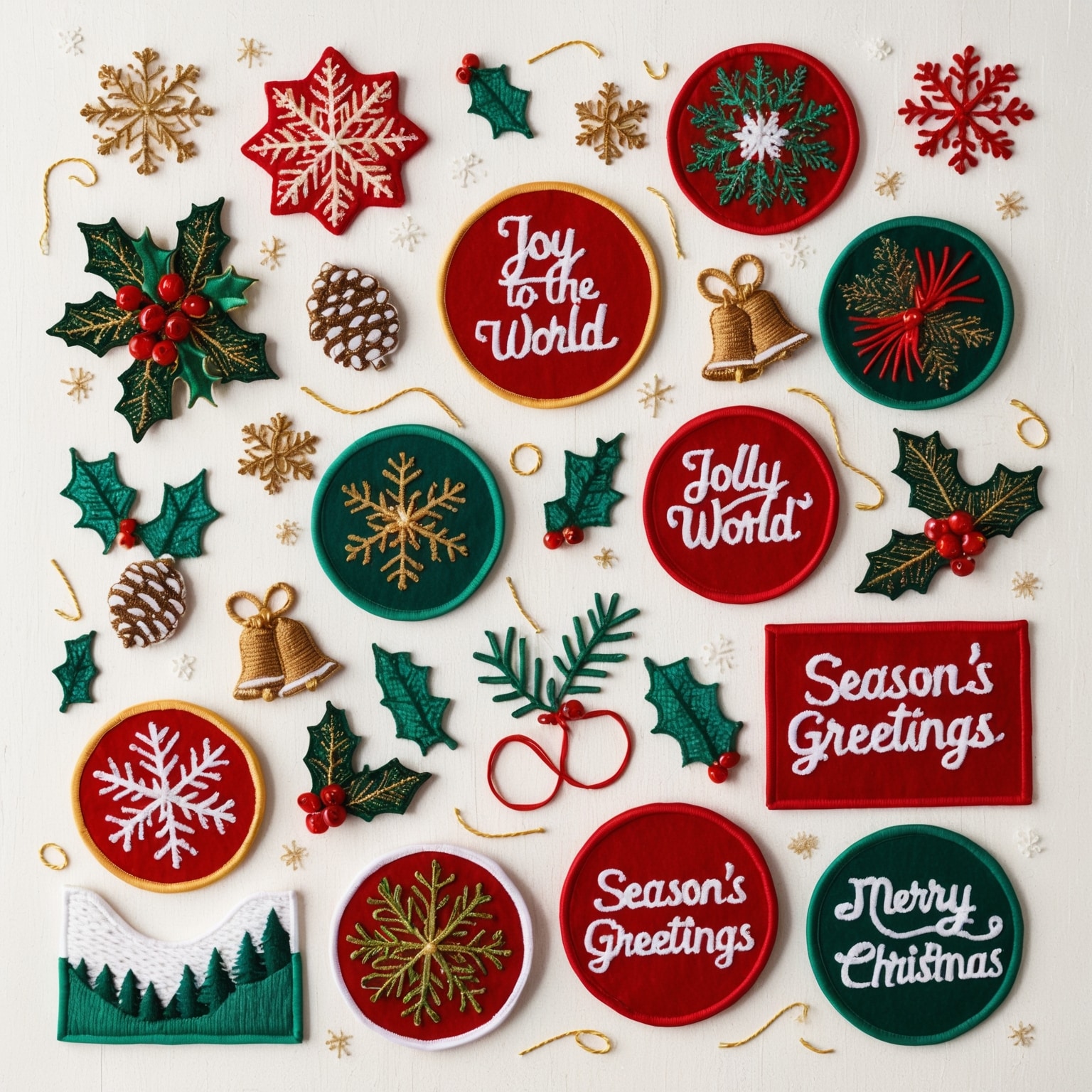In the competitive world of sports, where teams strive to showcase their identity, pride, and success, one of the most iconic and visible ways to express team spirit is through sports patches. Whether adorning jerseys, jackets, hats, or bags, sports patches play a crucial role in symbolizing a team’s essence. From local youth leagues to professional franchises, well-designed patches are more than just decorative elements—they’re powerful symbols of achievement, unity, and tradition.
But designing sports patches that truly stand out involves more than choosing a logo and slapping it onto fabric. It’s an intricate process that involves creativity, attention to detail, and strategic thinking. From the first concept sketch to the final embroidered product, every aspect of the design must align with the team’s identity, values, and aspirations.
In this article, we’ll guide you through the process of designing sports patches that make a lasting impact—from the initial concept phase to the moment the patch is proudly worn by players and fans. Whether you’re designing patches for a local sports club, a national league, or a commemorative event, this step-by-step guide will ensure your patches stand out and leave a lasting impression.
The Role of Sports Patches in Team Identity
Before diving into the design process, it’s essential to understand why sports patches hold so much significance. These embroidered symbols aren’t just accessories; they serve as critical elements in representing a team’s culture, achievements, and unity.
1. Team Identity and Brand Recognition
A sports team’s identity is more than just the players on the field. It’s the values they stand for, the history they carry, and the sense of community they foster. Patches are often the first visual cue that communicates these elements. By encapsulating a team’s colors, logo, mascot, and values, patches serve as a constant reminder of what the team stands for. When fans see these patches, they immediately recognize the team and feel a sense of belonging.
2. Recognition and Achievement
Patches are also used to celebrate individual and team accomplishments. In competitive sports, achievements like championships, tournaments, or even personal milestones are often commemorated with special edition patches. These act as symbols of honor and recognition, creating memories that last far beyond the season.
For youth teams, earning a patch can be a significant moment. Whether it’s a patch for most valuable player (MVP), best sportsmanship, or participation, these tokens of recognition help foster a sense of pride and encourage young athletes to keep striving for success.
3. Fostering Team Spirit and Unity
Sports patches help build unity within a team. When players wear patches that represent their club or team, they aren’t just athletes—they’re part of a greater whole. The shared symbolism fosters a sense of togetherness and belonging. Everyone wearing the same patch feels a part of the team’s collective journey, sharing the ups and downs of competition.
4. Boosting Fan Engagement
Fans are drawn to iconic symbols, and patches are one way for teams to engage with their supporters. Offering patches as part of team merchandise allows fans to feel more connected to the team’s journey. These patches, when sold as collectibles, souvenirs, or giveaways, help build a stronger relationship between the team and its fanbase, fostering loyalty and engagement.
Now that we understand the broader role of sports patches, let’s break down the process of designing a patch that truly stands out.
Step 1: Define the Purpose of Your Sports Patch
Before jumping into the design process, it’s crucial to first define the purpose of the patch. Knowing the patch’s specific purpose will help guide your design decisions and ensure that the final product aligns with the intended message.
Questions to Consider:
- What is the patch being designed for? Is it for a specific event, such as a tournament or championship, or is it a general team patch to be worn on uniforms year-round?
- Is the patch commemorating an achievement? If the patch is for a special accomplishment, such as winning a title or reaching a team milestone, that achievement should be reflected in the design.
- Who will be wearing the patch? Is the patch being created for players, coaches, fans, or all of the above? Knowing the audience can influence design choices, from the use of certain colors to the size of the patch.
For example:
- A championship patch should emphasize victory and excellence, perhaps incorporating elements like trophies, gold laurels, or symbols of triumph.
- A patch designed for a youth soccer league might be more playful, using vibrant colors and bold, fun shapes to engage younger players.
- A team branding patch might focus heavily on the logo and team colors, ensuring it becomes a recognizable symbol for fans and players alike.
Clearly defining the purpose of the patch will ensure that the design process stays focused and that the final product effectively communicates the intended message.
Step 2: Understand Key Design Elements of a Sports Patch
Designing a standout patch requires a clear understanding of the essential elements that make up an eye-catching and memorable patch. These elements include shape, color, typography, logo or mascot integration, and border design.
1. Patch Shape
While round or rectangular patches are common, don’t limit yourself to traditional shapes. The shape of the patch can be customized to reflect the team’s brand or specific event. Unique shapes immediately grab attention and can give your patch a more distinctive look.
- A basketball team might opt for a patch shaped like a basketball or backboard.
- A football team could design a patch in the shape of a football, helmet, or goalpost.
- Shield-shaped patches are often used by teams looking for a more traditional or regal design, as they represent strength and protection.
Experimenting with custom shapes allows for creativity and helps your patch stand out among more generic designs.
2. Color Selection
Color is one of the most critical aspects of patch design, especially in the world of sports where teams are often identified by their unique colors. Thoughtful use of color ensures that the patch stays true to the team’s branding while also standing out.
Here are some considerations:
- Team Colors: Always start with the team’s official colors. Incorporating them into the patch will ensure consistency with the team’s overall brand.
- Contrast and Legibility: Use contrasting colors to make key elements, such as text and logos, stand out. For instance, dark colors with bright accents can create a bold, dynamic look.
- Color Themes for Special Events: For commemorative patches, such as championship patches, you may want to incorporate metallic colors like gold, silver, or bronze to represent first, second, and third place finishes.
Keep in mind that the colors should not only align with the team’s identity but also enhance the visual appeal of the patch. Overloading a patch with too many colors can make it visually overwhelming, so aim for a balanced and cohesive palette.
3. Typography
The text on your custom sports patch, whether it’s the team name, an inspiring motto, or a specific achievement, plays a crucial role in conveying the patch’s message. The typography must be bold, clear, and legible from a distance, as patches are often viewed from afar during games or events.
Here are some tips:
- Bold Fonts: Blocky, bold fonts create a sense of strength and authority, making them ideal for team names or competitive accolades.
- Script or Cursive Fonts: If the patch is commemorating an individual milestone or special achievement, more elegant fonts like script or cursive can add a personal touch.
- Font Size and Spacing: Ensure that the text is proportionate to the overall patch size. Avoid overcrowding the patch with too much text, as it may reduce legibility. Prioritize key information, such as the team name or achievement, and ensure it is easily readable.
Typography is one of the most important aspects of the patch, as it not only conveys information but also sets the tone for the overall design. Make sure the font style reflects the personality of the team and the purpose of the patch.
4. Logo and Mascot Integration
For most custom sports patches, the team’s logo or mascot is a central feature. These elements represent the heart of the team’s identity and help distinguish the patch from others. When incorporating the logo or mascot, it’s important to simplify the design if needed. While detailed logos can look great on a computer screen, they may not translate well into embroidery.
- Simplify Details: Embroidery can make fine details harder to replicate, so simplify overly complex logos to include only the most important elements.
- Center the Logo: In most cases, the logo or mascot should be the focal point of the patch and placed prominently in the center.
- Complement with Other Elements: Surround the logo with complementary design elements, such as the team name, motto, or event details. This will enhance the visual appeal and balance of the patch.
A well-integrated logo or mascot not only strengthens the patch’s connection to the team but also makes it immediately recognizable to fans and supporters.
5. Border Design
The border of a sports patch serves both an aesthetic and practical function. It frames the patch and gives it a clean, finished look, but it also protects the edges from fraying. There are various types of borders to choose from, each with its own benefits.
- Merrowed Borders: This type of border involves thicker stitching around the edge of the patch, giving it a bold and defined appearance. It works well for circular or rectangular patches.
- Stitched Borders: A simple stitched edge creates a clean, professional finish and works well with custom shapes.
- Heat Cut Borders: This method is used for more intricate or custom-shaped patches, where precise edge finishing is required.
The right border can elevate your patch design, giving it a polished look while enhancing its durability.
Step 3: Focus on the Embroidery Process
Embroidery is the most common technique used for producing sports patches. However, translating a digital design into an embroidered patch requires careful consideration to ensure the design maintains its integrity and quality. Here are some key factors to keep in mind when transitioning your design into embroidery.
1. Embroidery Coverage
Embroidery coverage refers to how much of the patch’s surface is covered in stitching. You typically have three main options when choosing embroidery coverage:
- 50% Embroidery: In this option, half of the patch is embroidered, with the other half consisting of exposed fabric. This can be a more cost-effective option and works well for simple designs.
- 75% Embroidery: This level provides more coverage and allows for greater detail, while still leaving some fabric exposed.
- 100% Embroidery: In fully embroidered patches, the entire surface is covered with stitching. This option is ideal for highly detailed or premium patches where you want to create a polished, professional look.
The level of embroidery coverage will depend on the design complexity and your budget. For highly detailed patches, full coverage is typically recommended.
2. Thread Quality and Thickness
The quality of the thread used in your patch is essential to its durability and appearance. High-quality threads result in vibrant, long-lasting colors that won’t fade after washing or prolonged use. When designing your patch, consider the following:
- Thicker Threads: Thicker threads add more dimension and texture to your patch. They work well for creating bold, raised designs that stand out.
- Metallic Threads: For special edition patches or high-level achievements, metallic threads in gold, silver, or bronze can add a luxurious touch, making the patch feel more prestigious.
- Glow-in-the-Dark Threads: Glow-in-the-dark threads can add a fun, interactive element to the patch, particularly for youth teams or nighttime events.
By choosing the right thread type and quality, you can ensure that your patch remains vibrant and durable for years to come.
3. Detail and Texture
Embroidery is a versatile medium that allows you to create varying textures within your design. Using different stitching techniques, you can add dimension and depth to the patch, making it more visually engaging.
- Raised Stitching: By using thicker or raised stitching, you can make specific elements, such as the team name or logo, stand out more prominently.
- Flat Stitching: Flat stitching is ideal for background elements or smaller details where you want to create a smooth, subtle finish.
- Layering Stitches: Use layering techniques to add texture and complexity to the patch, such as combining flat and raised stitching to create depth.
Balancing different textures within the design adds a tactile quality to the patch, making it more dynamic and visually interesting.
Step 4: Incorporating Special Features
To truly make your sports patches stand out, consider adding special features or unique design elements that set them apart from traditional patches. Here are a few ideas to elevate your patch design:
1. 3D Puff Embroidery
3D puff embroidery is a technique that adds foam beneath the stitching to create a raised, three-dimensional effect. This technique is often used to highlight logos, text, or mascots, giving them a more pronounced, sculptural appearance. 3D puff embroidery is popular in professional sports patches because it adds a dynamic, eye-catching quality.
2. Glow-in-the-Dark and Neon Threads
For patches worn during night games or events, glow-in-the-dark threads can add a playful and unique touch. These threads absorb light during the day and emit a soft glow at night, making the patch visible in low-light conditions. Neon threads, on the other hand, create a bold, high-contrast effect that stands out in daylight.
3. Metallic Threads and Foil Embellishments
Using metallic threads or foil accents can add a touch of luxury to your patches. Gold, silver, and bronze threads are perfect for commemorating first, second, or third place achievements. Foil embellishments can also be used to create shimmering highlights or reflective surfaces that catch the light, making the patch more visually striking.
4. Heat-Sensitive and Color-Changing Threads
Heat-sensitive or color-changing threads are a fun and innovative feature that can create a “wow” factor. These threads change color when exposed to heat, UV light, or even friction, offering a dynamic design element that’s sure to grab attention.
By incorporating one or more of these special features, you can create a patch that stands out from the crowd and offers a memorable, tactile experience for players and fans alike.
Step 5: Test and Refine the Design
Once the design is complete, it’s crucial to test it before moving into full production. This phase ensures that the patch looks and functions as intended once it’s embroidered onto fabric. Consider creating a prototype or sample of the patch to evaluate the following:
- Color Accuracy: Ensure that the thread colors match the original design and that they align with the team’s branding.
- Text Legibility: Check that the text is clear and readable from a distance, especially if it will be worn on uniforms during games.
- Logo and Mascot Detailing: Verify that the logo or mascot is recognizable and doesn’t lose important details during the embroidery process.
- Overall Balance: Make sure that the design elements are well-proportioned and balanced within the shape of the patch.
If any adjustments are needed, now is the time to make refinements before moving forward with the full production run.
Step 6: Utilizing Your Sports Patches Effectively
Now that your sports patches are ready, it’s time to think about how to use them effectively. Patches can serve a variety of purposes beyond simply being sewn onto uniforms. Here are a few ways to maximize the impact of your sports patches:
1. Player Uniforms
The most common use for sports patches is to sew them directly onto player uniforms. This enhances team identity and gives players a sense of pride every time they step onto the field. Ensure that the placement of the patch is consistent across all uniforms, whether it’s on the sleeve, chest, or back.
2. Fan Merchandise
Sports patches can be sold as part of the team’s merchandise collection, offering fans a way to show their support. Patches can be sold individually or sewn onto clothing, hats, or bags as part of a larger merchandise offering. This not only engages fans but also provides an additional revenue stream for the team.
3. Award and Achievement Patches
Create specialized patches to award players for their individual or team achievements. These patches can be given for various milestones, such as MVP awards, leadership roles, or participation in special tournaments. Award patches can be added to jerseys, jackets, or displayed on team banners.
4. Collector’s Items
Sports patches are perfect for creating collectible items that commemorate significant team moments, such as championships, tournaments, or anniversaries. Fans and players alike may enjoy collecting these patches over time as part of their sports memorabilia.
5. Fundraising and Charity Events
Design limited-edition patches to support fundraising efforts or charity events. These patches can be sold at a higher price point, with proceeds going toward a specific cause or organization. This allows the team to make a positive impact on the community while also spreading awareness of their brand.
Creating Sports Patches that Stand Out
Designing sports patches that stand out involves a deep understanding of the team’s identity, the purpose of the patch, and the technical aspects of embroidery. By focusing on key design elements like shape, color, typography, and logo integration, and adding special features like 3D puff embroidery or metallic threads, you can create a patch that truly makes an impact.
Whether your patch is meant to commemorate a championship, celebrate team spirit, or engage with fans, the right design can turn a simple piece of embroidery into a lasting symbol of pride, achievement, and unity.
If you are interested in purchasing high-quality custom patches, feel free to call us at 1-877-503-8485 or fill out one of our FREE quotes here.




